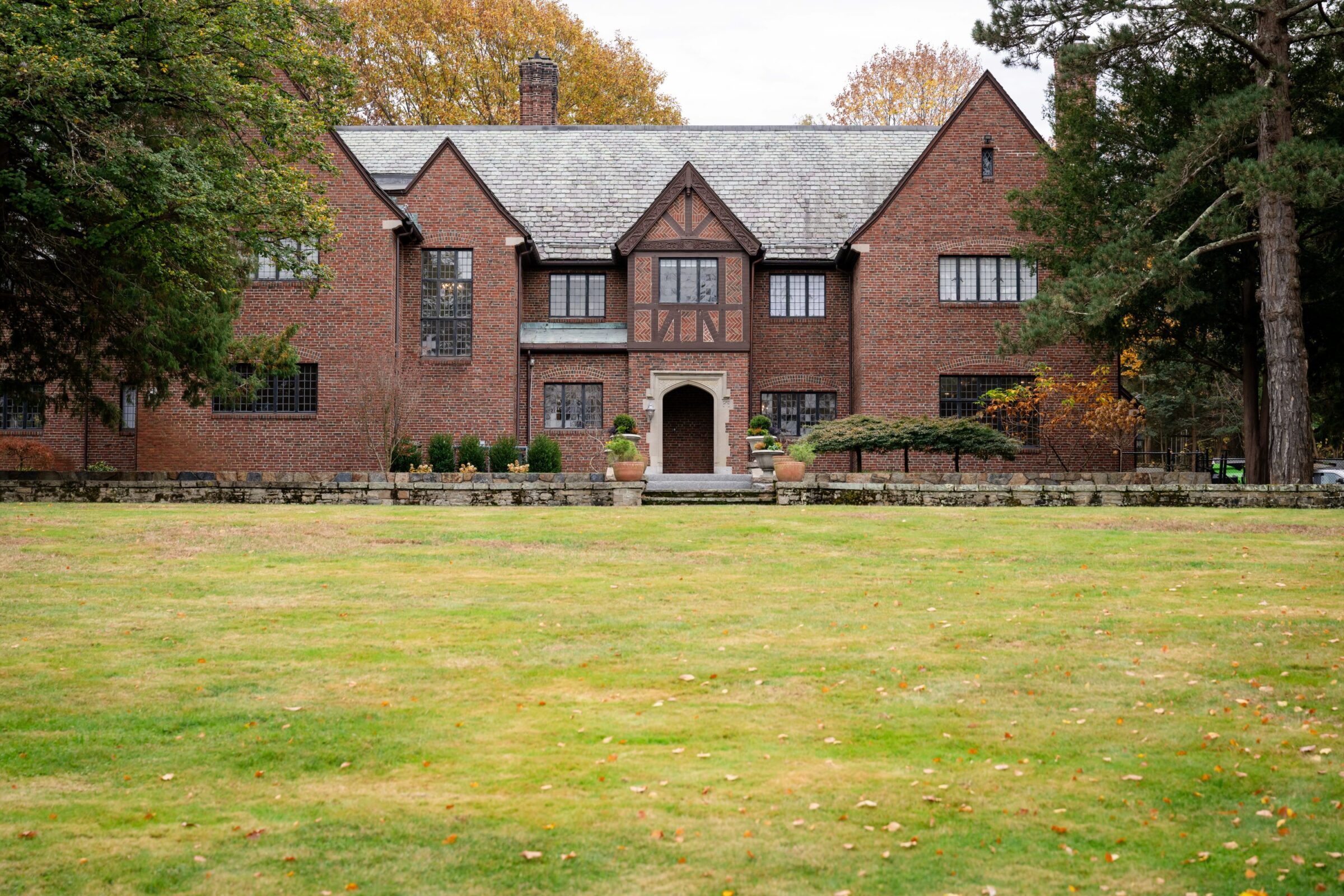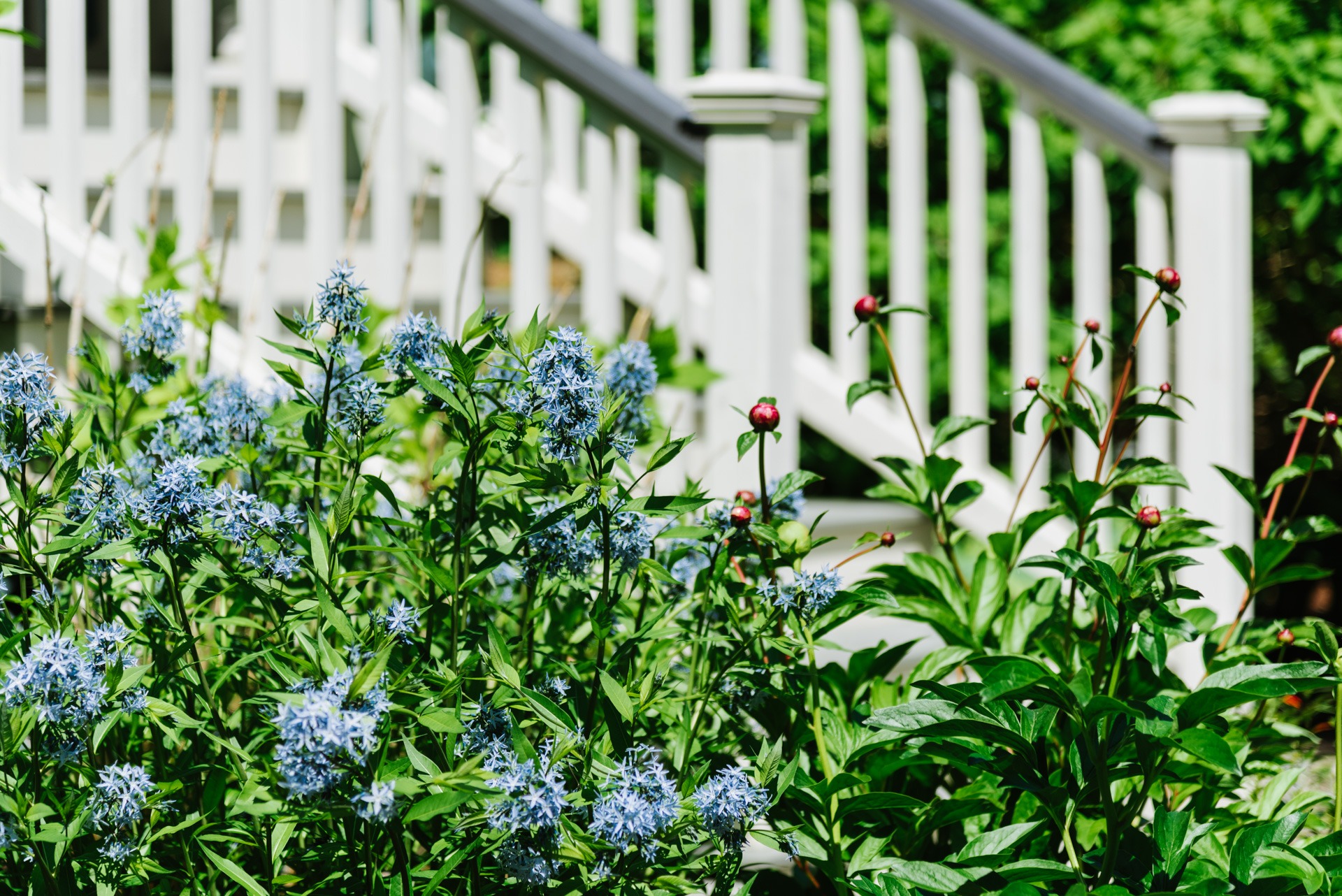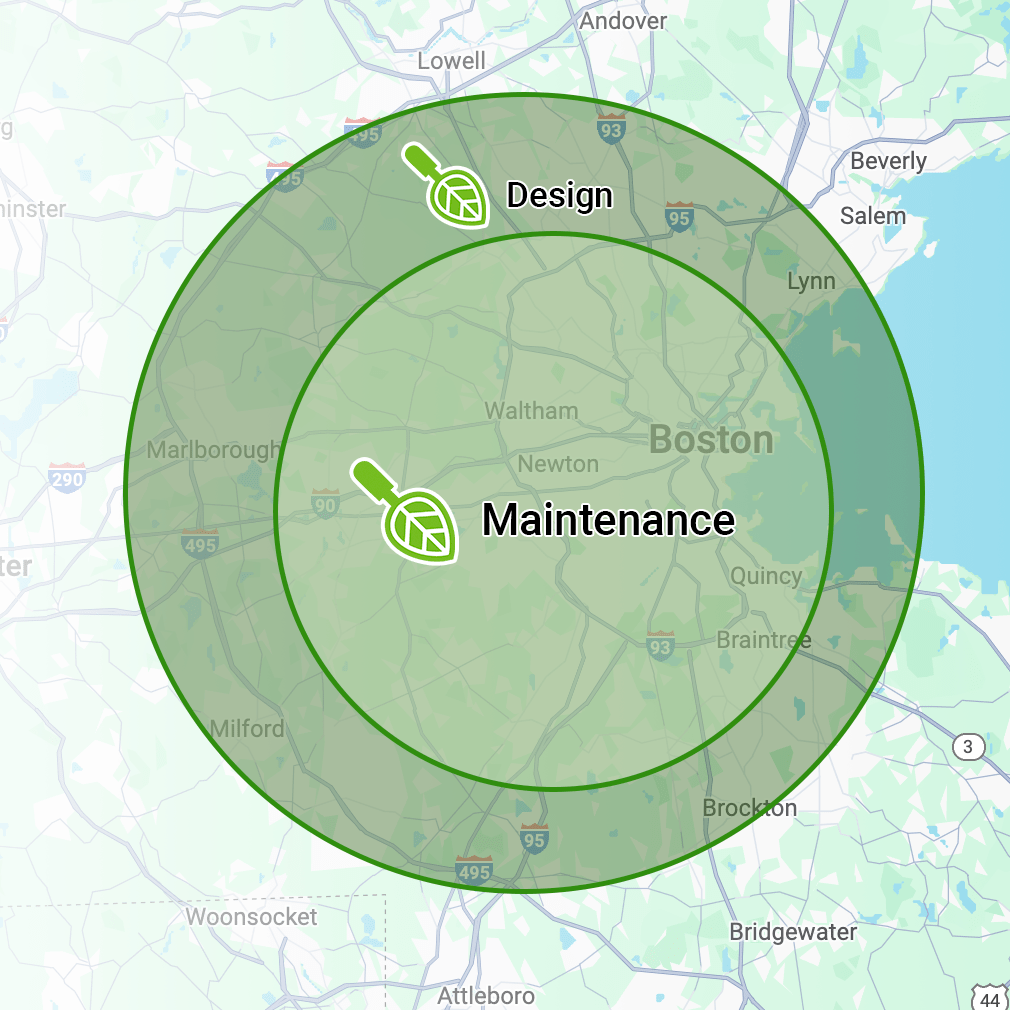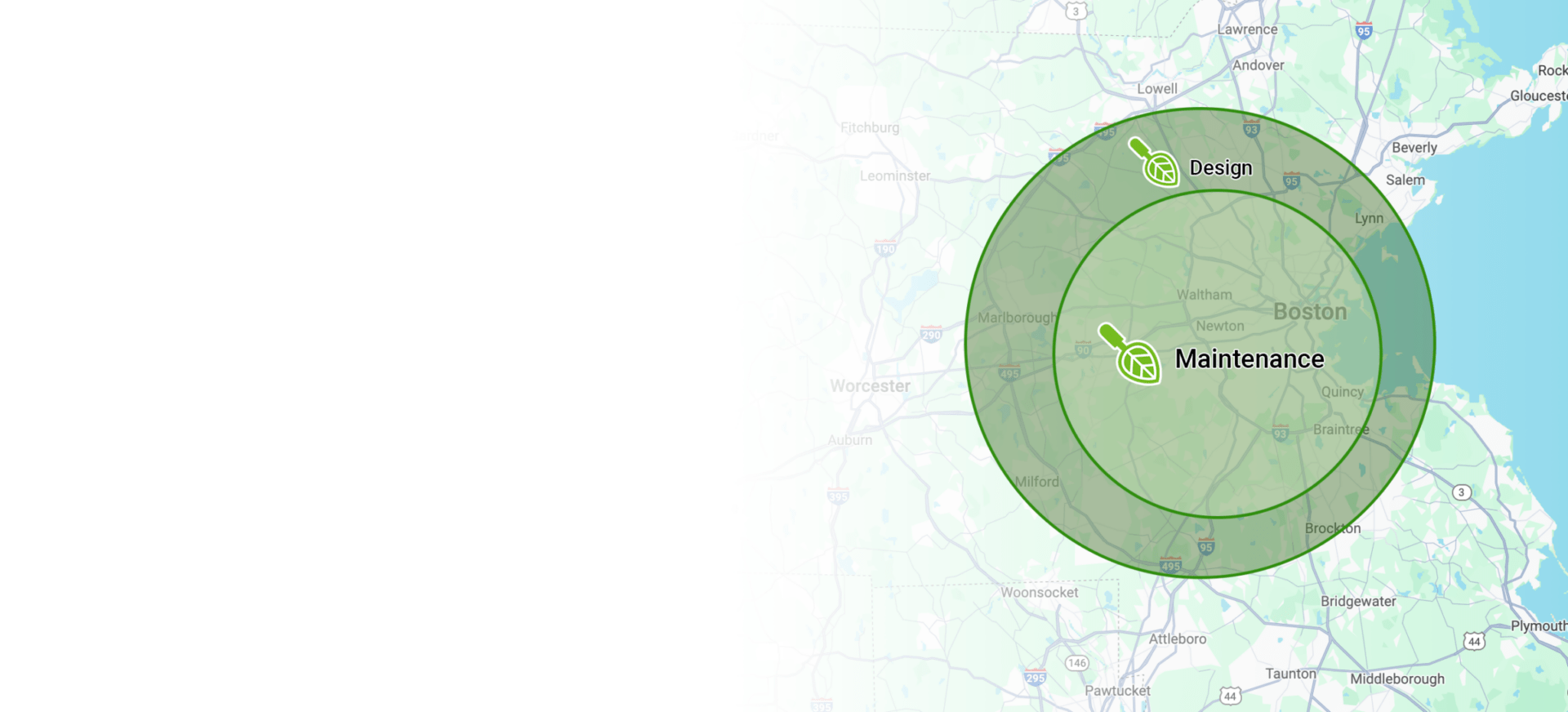Residential Landscape Maintenance in Boston, MA
Keep Your Outdoor Space Looking Its Best Year-Round


Hassle-Free Landscape Maintenance for Your Home
Your outdoor space deserves regular care to stay healthy and inviting. An unmaintained landscape can lead to overgrown shrubs, patchy grass, and unwanted weeds, making your home feel less welcoming. If past landscapers have let you down or maintenance has become overwhelming, it’s time for a solution that works.
With GreenOp Landscape’s residential landscape maintenance in Boston, MA, you get expert care that keeps your property looking polished without the hassle. From weekly mowing and precise pruning to seasonal clean-ups, everything is planned and handled for you—so you never have to worry.
Residential Landscape Maintenance Services in Boston, MA
Our residential landscape maintenance services cover everything from routine upkeep to specialized care, ensuring your property stays healthy, vibrant, and beautiful year-round. Need something specific? We offer customized solutions tailored to your landscape’s unique needs. Whether it’s on the list below or something more specialized, if your landscape needs it—we can handle it.
Essential Maintenance Included in All Plans
Seasonal Cleanups
Prepare your property for changing seasons with debris removal and essential care.
Weeding & Mulching
Keep garden beds tidy and nourished with professional weeding and mulch application.
Pruning & Trimming
Maintain the health and appearance of shrubs, hedges, and trees with precise trimming.
Weekly Mowing
A consistent mowing schedule ensures a lush, even, and vibrant lawn all season long.
Property Walkthroughs
Maintain the health and appearance of shrubs, hedges, and trees with precise trimming.
Expert Guidance
Receive professional insights and expert recommendations to keep your yard thriving.
Optional Additions for Residential Maintenance Plans
Fertilization & Soil Health
Nutrient-rich soil and expert fertilization keep your landscape lush, healthy, and thriving.
Irrigation System Management
Keep your lawn and plants thriving with precise, custom watering schedules.
Plant Health Monitoring
Regular check-ups ensure your trees, shrubs, and flowers stay healthy, and pest-free.
Specialty Pruning
Expert care for ornamental trees and shrubs to enhance beauty, shape, and long-term growth.
Annuals Planting
Add vibrant, seasonal color to your landscape with fresh, expertly chosen and carefully planted annuals.
Bulb Planting
Plant today, bloom tomorrow—enjoy stunning seasonal flowers with perfectly timed bulb planting.
Lawn Aeration & Overseeding
Thicker, healthier grass starts here. Reduce compaction and improve soil & growth.
Organic Lawn Care
A greener, chemical-free approach to lush, resilient turf that’s safe for people and pets.

“Our condo association has been thrilled with their work”
“GreenOp has done a terrific job from the very beginning. Josh was very patient and responsive to our questions while we were deciding to hire them for landscape maintenance of our Condo Association property. Everyone in our 8-unit townhouse condo association has been thrilled with their work. They also alert you the day before they visit in case cars may need to be moved. Overall, we have been very happy as they have a very reasonable price and exceptional service.”
“They genuinely care about their employees and their customers”
“I’ve worked with Josh at Green Ops for the last few years. They treat their employees well and genuinely care about their employees and their customers. If you’re looking for an awesome landscaping service in the greater Boston area, start with these guys.”
“I was truly amazed”
“GreenOp came in and rectified my little jungle I had surrounding my home. I worked a lot, and it became increasingly difficult for me to control. I called for a quote and met with Chris, and the rest was history. GreenOp came in, and puff, did their magic, & maintained the landscaping post. I was truly amazed. I will definitely recommend and maintain a working relationship onwards.”
“A breath of fresh air for first-time homeowners”
“As a first-time homeowner, vetting and hiring contractors is definitely the most stressful part of the process! GreenOp is a breath of fresh air. I’ve used Josh and his crew at GreenOp for a few different projects and just hired them again to finish the design and landscaping of our backyard. Josh is responsive to questions and respectful of budgets, and his crew is professional, quick, and tidy. We’ve been really happy with the quality of work – after our first project with GreenOp, multiple neighbors came over to compliment us!”
“They consistently exceed expectations”
“I’ve had the pleasure of working with GreenOp on multiple occasions, and they consistently exceed expectations. Their attention to detail is unmatched, ensuring that every project is executed with precision and care. Communication is always clear and timely, making collaboration smooth and efficient. The project management team at GreenOp stands out for their exceptional organizational skills and commitment to excellence. Their dedication to delivering top-notch results makes them a standout choice in the industry. I highly recommend GreenOp with a 5/5 rating!”

Why Choose GreenOp Landscape?
A well-maintained landscape should be effortless. Here’s how GreenOp Landscape makes it happen:
- Reliable & Professional – A trusted team that shows up and delivers expert care.
- Clear Communication – All details are managed in one system for easy updates.
- Hands-Off Maintenance – Every service is planned so you don’t have to think about it.
- Streamlined Invoicing – Simple and professional billing for a stress-free experience.

Serving Milton, MA & Surrounding Areas
- Auburndale
- Bedford
- Belmont
- Boston
- Brookline
- Duxbury
- Lexington
- Lincoln
- Medfield
- Natick
- Needham
- Newton
- Sherborn
- Southborough
- Sudbury
- Waban
- Wayland
- Wellesley
- Weston

Commercial Landscape Maintenance in Boston, MA
Maintaining a commercial landscape is vital for creating a professional and inviting exterior. Whether you manage an office complex, retail center, or industrial property, consistent care of landscaped areas enhances curb appeal, ensures safety, and contributes to long-term property value. Below are the key aspects to ensure your commercial landscapes are well-maintained.
Benefits of Regular Landscape Maintenance with a Landscape Contractor in Boston, MA
Proper maintenance not only keeps outdoor spaces visually appealing but also brings several advantages:
– Curb Appeal: A well-maintained property creates positive first impressions for clients, visitors, and tenants.
– Increased Property Value: Healthy landscapes can increase the overall valuation of a commercial property over time.
– Safety & Liability: Properly pruned trees/shrubs and debris-free pathways reduce risks of accidents.
– Environmental Benefits: Professionally maintained green spaces contribute to improved air quality and reduced erosion.
Key Components of Commercial Landscape Maintenance with Landscaping Services in Boston, MA
- Lawn Care:Regular mowing, edging, aerating, and fertilization ensure turf health while maintaining a clean appearance. Seasonal treatments also prevent the lawn from becoming patchy or overgrown.
- Shrub & Tree Trimming:Proper trimming enables controlled growth while removing dead or damaged branches that may pose safety hazards.
- Soil Care:Regular soil testing helps maintain the correct pH balance and nutrient levels for thriving plant life.
- Irrigation System Monitoring for Landscaping in Boston, MA:Irrigation systems should be inspected regularly for leaks or inefficiencies to ensure adequate hydration without water waste.
- Seasonal Adjustments:Planting seasonal flowers or shrubs keeps landscapes dynamic year-round.
Tips for Successful Commercial Landscape Maintenance in Boston, MA
- Develop a regular maintenance schedulethat includes weekly inspections by professionals.
- Use native plants suited to your region’s climate as they require less water and care.
- Monitor weather conditions closely to adjust watering schedules during dry spells or rainy seasons.
- Invest in eco-friendly practices like compost mulching or planting trees that provide shade and energy efficiency.
| Aspect of Maintenance | Tasks Involved | Frequency |
| Lawn Care | Mowing, edging, fertilizing | Weekly/Monthly |
| Shrub & Tree Trimming | Pruning dead branches | Seasonal/As needed |
| Irrigation Monitoring | Inspecting systems for leaks | Monthly |
| Soil Health | Testing soil pH & nutrients | Semi-annually |
Hiring Professionals vs DIY for Landscape Design in Boston, MA
- Professionals bring expertise in irrigation design, pest control management systems, and plant health diagnostics.
- Outsourcing allows businesses to focus on core operations without allocating additional resources toward equipment purchase or employee training.
Investing in commercial landscape care sets the stage for a safer environment while enhancing your business’s image through thoughtful outdoor aesthetics. By prioritizing regular upkeep tailored to specific needs, properties can remain functional yet visually impressive year-round.
Shrub & Tree Trimming
Proper care of shrubs and trees is essential to maintaining the health, aesthetic, and longevity of your landscape. Regular trimming not only enhances the visual appeal of your outdoor space but also promotes healthy growth and prevents potential hazards. Below, we’ll discuss best practices for shrub and tree trimming, common mistakes to avoid, and benefits this maintenance task provides.
Benefits of Shrub & Tree Trimming
Regular trimming offers several advantages that extend beyond aesthetics.
- Enhanced appearance: Properly shaped shrubs and trees contribute to a polished look in any landscape design.
- Encouraged growth: Pruning stimulates new growth by alleviating stress on older or unproductive branches.
Best Practices for Shrub & Tree Trimming
- Most shrubs should be pruned in late winter or early spring before new growth begins.
- Trees may have different pruning seasons depending on their species (e. g. , flowering trees can be pruned after blooming).
- Sharp pruning shears for small branches.
- Loppers for medium-sized limbs.
- A pruning saw or chainsaw for larger branches.
- Avoid cutting more than one-third of a shrub’s or tree’s foliage in a single session to prevent stress.
- Make cuts slightly above a bud facing outward at a 45-degree angle to encourage outward growth.
- Remove affected parts immediately if you notice spots, discoloration, or fungal presence on leaves or bark.
Common Mistakes to Avoid
- Over-pruning: Excessive trimming can weaken plants by reducing their ability to photosynthesize.
- Topping trees: Cutting off large sections at the top leads to weak regrowth prone to breaking.
- Ignoring branch collars: The branch collar (swollen area where a limb meets the trunk) should remain intact during pruning as it helps heal wounds naturally.
Sample Maintenance Schedule
| Task | Frequency | Best Season |
| Light pruning | Monthly/Bi-Monthly | Spring/Summer |
| Deadwood removal | Year-round | Anytime |
| Structural shaping | Annually | Late Winter/Early Spring |
| Pest/Disease inspection | Bi-Monthly | Year-round |
Proper planning ensures that your landscape remains vibrant throughout each season.
Sustainable Practices in Pruning
For sustainable landscaping care, consider composting trimmed plant material instead of discarding it in landfills. Additionally, using manual tools where possible can reduce noise pollution and energy consumption associated with powered equipment.
By keeping these strategies in mind, shrub and tree trimming becomes an efficient way to maintain both beauty and functionality across any commercial or residential landscape setting.
Shrub & Tree Trimming
Proper shrub and tree trimming is a cornerstone of effective landscape maintenance. It enhances the aesthetic appeal of your property, promotes plant health, and ensures safety by eliminating potential hazards caused by overgrown or weak branches. Below is a comprehensive guide to the importance of shrub and tree trimming, along with best practices to follow.
Benefits of Shrub & Tree Trimming
- Removes dead, diseased, or damaged branches, preventing decay from spreading to healthy parts of the plant.
- Stimulates new growth by allowing sunlight and air to penetrate deeper into the canopy.
- Shapes shrubs and trees to align with desired designs or architectural themes on commercial or residential properties.
- Maintains symmetry and balance across landscapes for a polished appearance.
- Prevents falling branches that could damage property or cause injury during storms or high winds.
- Keeps walkways, driveways, and lines of sight unobstructed for pedestrians and drivers.
Best Practices for Shrub & Tree Trimming
- Timing:Trim shrubs and trees during their dormant season (typically winter) to minimize stress on plants while promoting robust growth in the spring.
- Tools:Use clean, sharp tools such as pruning shears, loppers, and saws to make precise cuts without tearing bark.
- Remove crossing branches that rub against each other as they can cause wounds susceptible to pests and disease.
- Avoid over-pruning; removing more than 25% of a tree’s canopy at once can harm its health.
- Focus on shaping shrubs uniformly while maintaining their natural growth patterns.
Tools Table: Essential Equipment for Trimming
| Tool | Purpose | Ideal For |
| Pruning Shears | Precise cuts on small branches | Shrubs & thin tree limbs |
| Loppers | Cutting medium-sized branches | Thicker shrub stems |
| Hand Saws | Removing large deadwood | Thick tree branches |
| Pole Pruners | Extending reach for higher branches | Canopy-level trimming |
Common Mistakes to Avoid
- Topping Trees:This involves cutting off the tops of trees inappropriately; it weakens structure and promotes poor regrowth patterns.
- Over-Pruning Flowering Shrubs:Excessive trimming can reduce blooms in plants like hydrangeas or roses if done at the wrong time.
- Neglecting Clean-Up:Leaving trimmed debris near plants can attract pests or fungal growth.
By maintaining a consistent schedule for shrub and tree trimming while adhering to proper techniques, you can ensure vibrant greenery that contributes positively to your landscape’s overall health and appearance.
Irrigation System Monitoring
Properly monitoring your irrigation system is a crucial component of maintaining a healthy and vibrant landscape. Whether in a residential or commercial setting, irrigation systems ensure that lawns, plants, shrubs, and trees receive adequate water to thrive. A well-maintained system not only supports plant health but can also minimize water waste and lower utility costs.
Importance of Regular Irrigation System Checks
Routine monitoring of your irrigation system helps identify potential issues early before they escalate into costly repairs or lead to damage in the landscape.
- Preventing Overwatering and Underwatering:Uneven water distribution may cause some areas of your lawn to become soggy while others remain dry.
- Minimizing Water Waste:Leaks or malfunctioning components can lead to increased water bills and unnecessary waste.
- Avoiding Plant Stress:Plants require consistent watering schedules to maintain their health.
- Compliance with Local Regulations:Many municipalities enforce strict watering ordinances; an efficient system ensures compliance.
Steps for Effective Irrigation System Monitoring
Regular inspection and maintenance of your irrigation system are essential.
- Look for clogged, misaligned, or damaged sprinkler heads.
- Ensure proper spray patterns are covering the intended areas without overspraying sidewalks or driveways.
- Monitor the pipes, hoses, and connectors for any signs of leaks or drips.
- A sudden spike in water usage may indicate an undetected leak.
- Measure water pressure to ensure it aligns with the manufacturer’s recommendations.
- Low pressure may reduce coverage, while high pressure could damage components.
- Confirm that timer settings match seasonal requirements (e. g. , less frequent watering during cooler months).
- Replace outdated controllers with smart irrigation technology for improved efficiency.
- Use soil moisture sensors or probes to determine how much water is retained in different zones.
- Adjust schedules accordingly to prevent excess watering.
- Winterize systems by draining lines before freezing temperatures set in.
- Perform a thorough inspection when restarting systems during spring.
Benefits of Smart Irrigation Technology
- Smart Controllers:These adjust watering schedules based on local weather data and soil conditions.
- Drip Irrigation Systems:Ideal for garden beds, drip systems deliver water directly to the root zones of plants, reducing evaporation loss.
- Rain Sensors:Automatically pause irrigation during periods of rainfall, conserving resources effectively.
| Component | Issue Detected | Solution |
| Sprinkler Heads | Clogged/no spray | Clean or replace |
| Pipes/Connectors | Leaking | Repair connections/replace damaged parts |
| Controller | Incorrect scheduling | Reprogram settings |
| Soil Moisture | Too dry/wet | Adjust frequency/duration appropriately |
Final Thoughts on Monitoring Practices
By establishing a regular schedule for inspecting your irrigation system and incorporating modern technologies where possible, you can maintain an efficient setup that promotes healthy landscapes while conserving valuable resources like water. Always address issues promptly when identified through monitoring efforts to prevent further complications down the line.
Weed & Pest Management
Effective weed and pest management is a critical component of maintaining a thriving and aesthetically pleasing landscape. Unchecked weeds can outcompete desirable plants for nutrients, water, and sunlight, while pests can damage or destroy shrubs, trees, and lawns. Incorporating an integrated approach ensures that landscapes remain healthy and visually appealing year-round.
Common Types of Weeds and Pests
To effectively manage weeds and pests, it’s essential to understand the most common culprits in your specific region.
Weeds:
– Dandelions
– Crabgrass
– Clover
– Nutsedge
– Bindweed
Pests:
– Aphids
– White grubs (lawn-damaging beetle larvae)
– Japanese beetles
– Spider mites
– Scale insects
Steps for Effective Weed Management
- Prevention:Keep soil healthy to promote robust plant growth that naturally suppresses weeds. Regularly inspect landscapes for early signs of weed growth to address issues before they spread.
- Mulching:Apply organic mulch around trees, shrubs, and flower beds to inhibit weed germination while conserving soil moisture. Ensure the mulch layer is 2–4 inches deep for optimal effectiveness.
- Hand Pulling:For smaller infestations or delicate areas like flower beds, hand-pulling is a precise way to remove weeds without harming nearby plants.
- Herbicides:When necessary, selective herbicides can be used to target specific types of weeds without damaging surrounding vegetation—ensure proper application by following label instructions.
- Regular Maintenance Practices:Mowing lawns at the correct height and maintaining consistent irrigation schedules helps grass compete more effectively against invasive weeds.
Practical Approaches to Pest Management
- Integrated Pest Management (IPM): IPM combines cultural, biological, mechanical, and chemical methods for long-term pest control with minimal environmental impact:
- Use natural predators such as ladybugs or parasitic wasps where applicable.
- Install pest barriers like netting over specific plants prone to infestation.
- Rotate crops in garden areas seasonally to disrupt pest life cycles.
- Regular Scouting:Inspect plants weekly during peak growing seasons for signs of damage such as discolored leaves or chewed edges.
- Natural Repellents:Utilize solutions like neem oil sprays or homemade garlic-based repellents as eco-friendly options against pests.
- Chemical Treatments (When Necessary):Use targeted insecticides sparingly and apply during low wind conditions for precision.
Best Practices Table
| Task | Frequency | Tools/Products Needed | Notes |
| Mulching | Twice per year | Organic mulch | Apply in spring and fall |
| Weed pulling | As needed | Garden gloves | Target after wet weather |
| Scouting for pests | Weekly | Magnifying glass | Examine undersides of leaves |
| Herbicide use | As needed | Selective herbicide | Follow all safety guidelines |
| Biological controls | Seasonally | Ladybugs or nematodes | Introduce early in the season |
By combining these practices into your regular landscape maintenance routine, you can create an environment where healthy plants thrive while minimizing the presence of unsightly weeds or destructive pests.
Compliance with HOA/Property Standards with Landscaping Companies in Boston, MA
Maintaining compliance with Homeowner Association (HOA) or property standards is a critical aspect of landscape maintenance for both residential and commercial properties. Failing to adhere to these guidelines can result in fines, disputes, or loss of property value. Here’s a detailed guide on ensuring your landscaping stays in line with HOA or property regulations.
Understanding HOA Guidelines
The first step to maintaining compliance is thoroughly understanding the specific requirements set by your HOA or property management:
– Review governing documents:Check covenants, conditions, and restrictions (CC&Rs) provided by the HOA. These documents often outline acceptable landscaping practices.
– Identify restricted plants/materials:Certain communities may prohibit invasive species, overgrown hedges, or specific color schemes for hardscaping features.
– Height and spacing rules:Many HOAs enforce height limitations for shrubs and trees as well as proper spacing to maintain uniform appearances across properties.
Landscaping Practices Aligned with Property Standards
- Keep grass neatly mowed at the specified height.
- Avoid bare patches by reseeding regularly.
- Ensure irrigation systems provide consistent watering without oversaturation.
- Trim trees to avoid overhanging onto neighboring properties.
- Remove dead branches promptly to maintain aesthetics and safety.
- Select plants from approved lists provided by the HOA.
- Use natural mulch materials unless specific types are prohibited.
- Maintain clean bed edges for an organized appearance.
- Seasonal Decorations:
Ensure seasonal decorations are tasteful and meet size/duration restrictions set by the HOA.
Addressing Pest & Weed Control
Most HOAs require prompt action against pests or weeds that could spread to neighboring properties or disrupt uniformity in landscaping.
– Regular weed removal from lawns, beds, and pathways. – Using organic herbicides where permitted. – Implementing integrated pest management strategies that comply with community standards.
Communication Matters
Building rapport with your HOA board can make landscape compliance easier:
– Submit approval requests:For large-scale projects such as installing garden beds or patios, receive prior approval from the board.
– Attend meetings:Join discussions about landscape rules to stay updated on potential changes or additions to regulations.
– Report issues:Notify the board of any discrepancies affecting shared spaces (e. g. , communal gardens).
| Common Violations | Examples | Suggested Fixes |
| Unapproved plantings | Planting non-native species | Replant approved varieties |
| Overhanging branches | Trees encroaching on walkways/yards | Prune branches back regularly |
| Poor seasonal cleanup | Fallen leaves/debris accumulation | Schedule regular yard cleaning |
By adhering closely to these principles, you not only avoid penalties but also contribute positively to your property’s curb appeal while fostering harmony within the community ethos of shared standards.
How It Works
Your landscape should reflect your vision without added stress. Our process keeps things simple:
Consultation & Design
Collaborate with our team to craft a plan that aligns with your property’s aesthetic, maintenance preferences, and unique characteristics, ensuring a functional and beautiful design.
Expert Installation
Our experienced crew works efficiently, keeping disruptions minimal while ensuring quality that enhances your outdoor space with a professional and refined result.
Ongoing Maintenance
We ensure healthy plants, pristine hardscapes, and proactive solutions that keep your property looking its best season after season, all with minimal effort on your part.
Support & Satisfaction
Our team is available for questions or additional services, providing expert support and a commitment to maintaining your property’s beauty long after the initial project is complete.
Areas Served
Ready for a Yard That Always Looks Its Best?
Never worry about landscape maintenance again. Contact GreenOp Landscape today.

